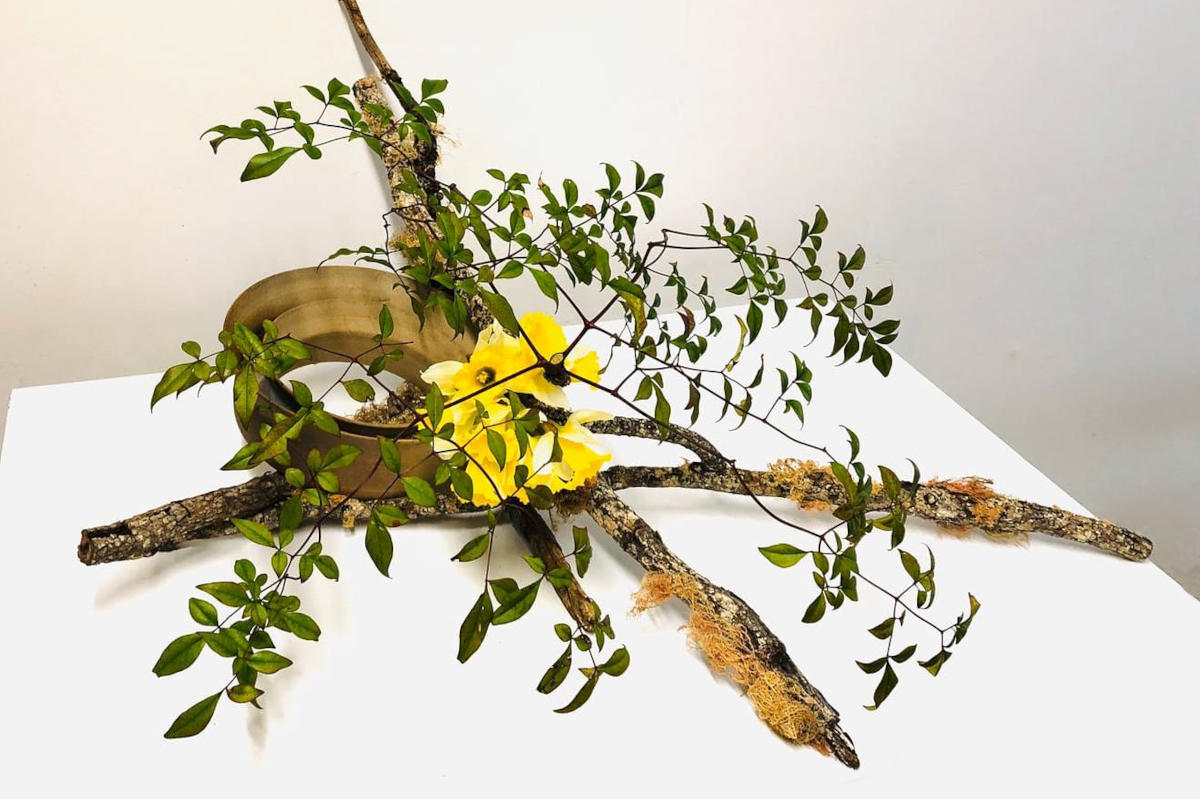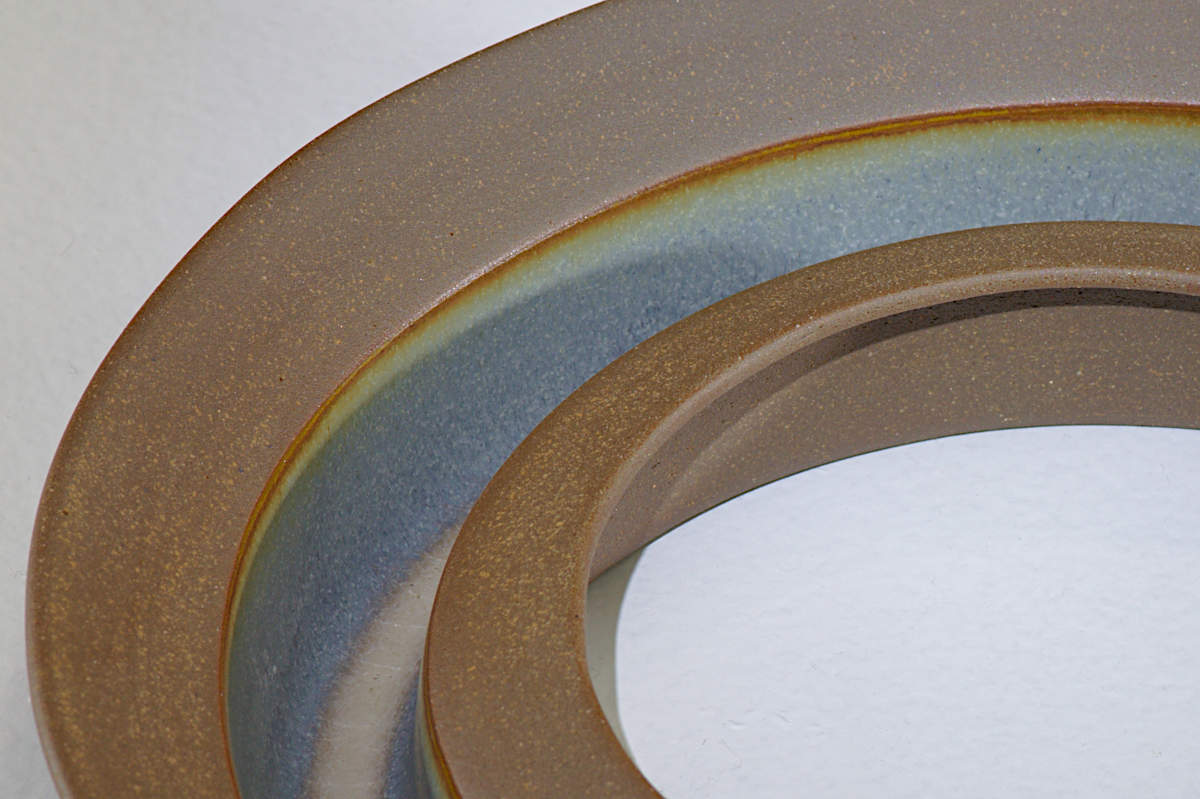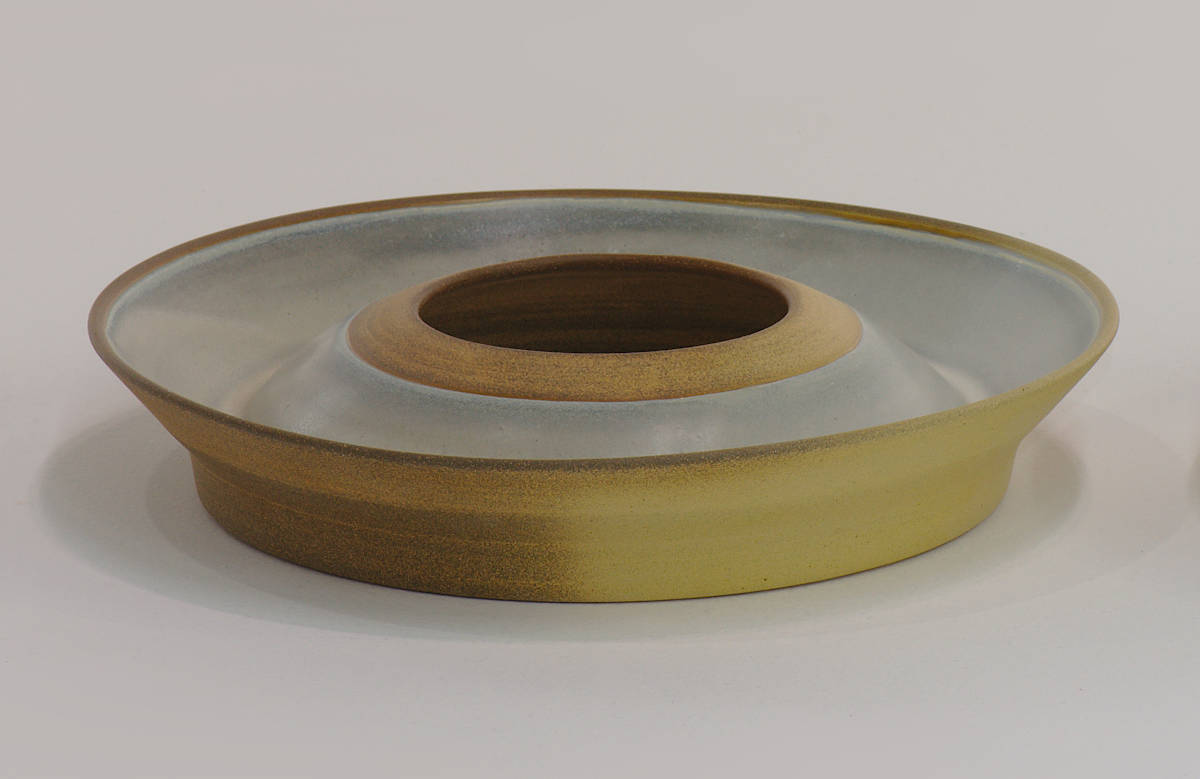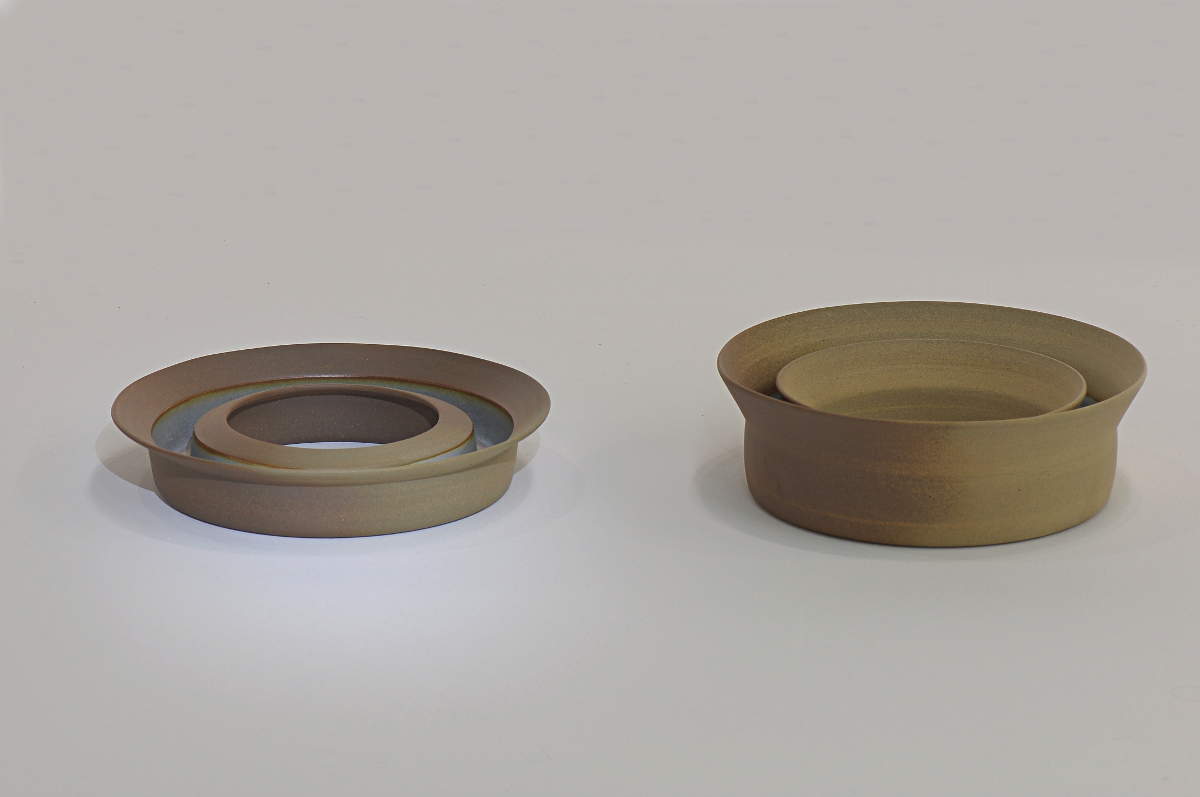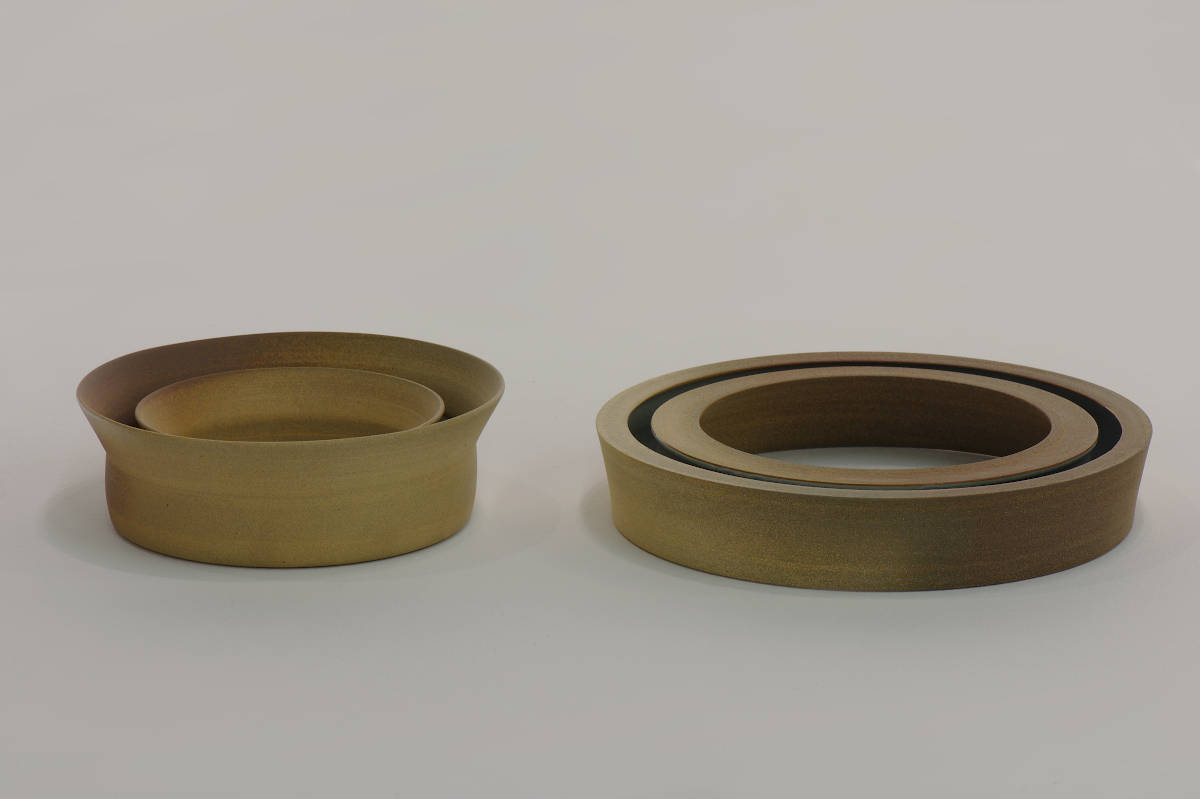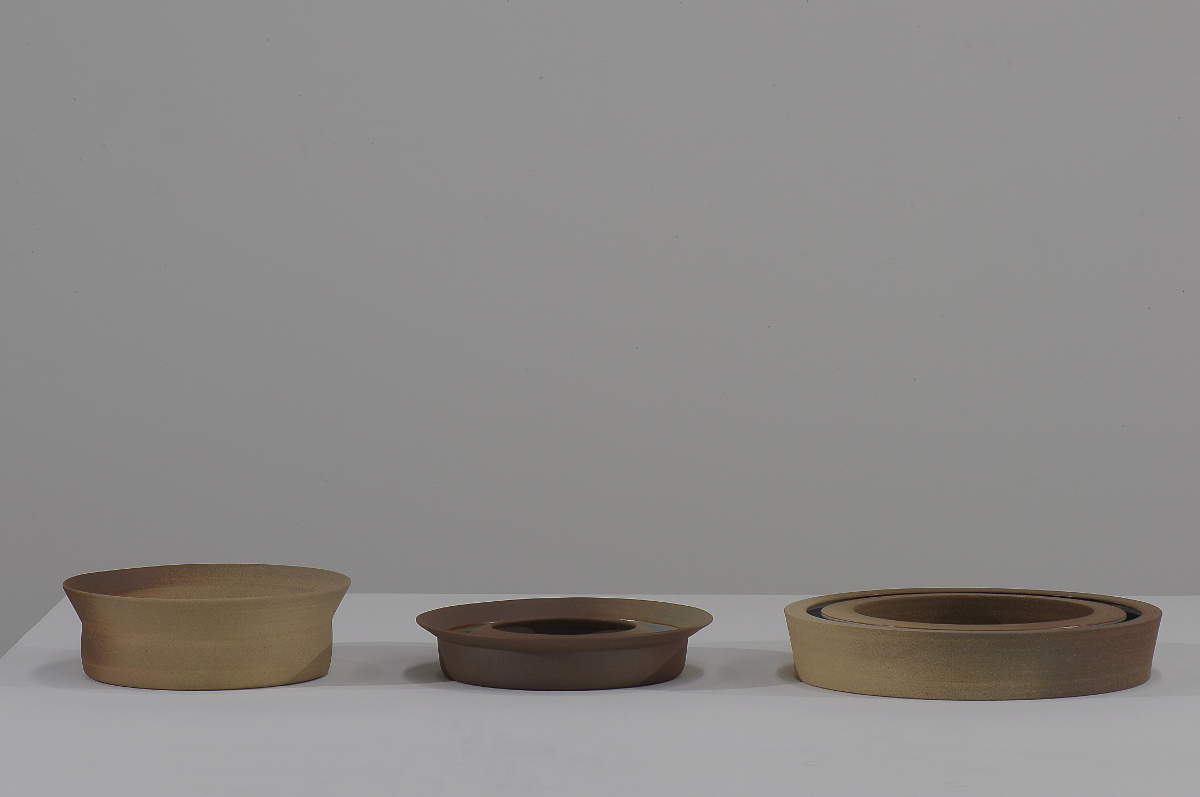
Double Walled Vessels 2018
The walls of the Ryōan-ji Garden in Kyoto are made of clay, which has over time developed a patina of subtle ochre, taupe and grey shades. Firing unglazed Ironstone and Los Altos clays in strong reduction in a gas kiln causes the clay to react with the atmosphere in the kiln and emulate such weathered surfaces.
These double walled ceramics were all fired in the same firing and there is a marked difference in the colour of the clay from one side to the other - the darker side is where reduction was stronger and the lighter side indicates greater local oxidation. Vessel 4 shows the strongest reduction and is the darkest.
The interplay of the seemingly weathered surface on the precise geometrical forms of these double walled vessels creates a tension between the ordered, predictable curve of the form and the random marking of the surface. The appearance of the variegated matte glaze on the interior is influenced by the form and also by the direction of the flame and the atmosphere in the kiln. Thus, the selection of glaze and the firing technique impart a random element to an ordered symmetrical form.
Glaze
The interiors of the works are glazed with a 'weathered' matte glaze which exhibits shades of white, cream and grey and sometimes touches of blue and ochre. Glazes such as this are often quite sensitive to thickness of application and flow. The glaze flows as it melts pooling into thicker layers in the base and thinning as it flows down the walls during firing. The detailed close up of vessel 4 shows that the glaze in the base is cream coloured while on the walls it appears as a mottled grey, slate blue and ochre with a golden brown halo at the edge where it meets the clay body. The glaze has been removed from the top sections of the works prior to firing to achieve this effect.

Awards
Double walled Vessels 4 and 6 won the 3D Category Prize in the Moreton Bay Region Art Awards in May 2019. The works may be viewed at the Moreton Bay Region Art Awards 2019.
Judge's comments:
"The two pieces that comprise this work are technically exquisite. They are poised and elegant, their forms strike a perfect balance between function and abstraction."
Construction
The works were thrown on the wheel from one piece of clay. The clay is pushed out from the centre of the wheel to form a circle. A finger is pushed down into the centre of the circle forming a trough. The two walls of the trough are thrown to create an inner and an outer wall, which are shaped using a variety of ribs.
The vessels hold water and, while they may be enjoyed purely as sculptural objects, they can be used as vases.
Dimensions in Centimetres
| Item | Height | Width ∅ |
| Double Walled Vessel 1 | 8.5 | 26 |
| Double Walled Vessel 2 | 6 | 34 |
| Double Walled Vessel 3 | 5.5 | 31 |
| Double Walled Vessel 4 | 5 | 27 |
| Double Walled Vessel 5 | 6 | 33.5 |
| Double Walled Vessel 6 | 7.5 | 27.5 |




